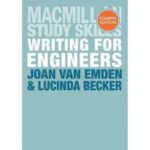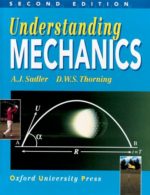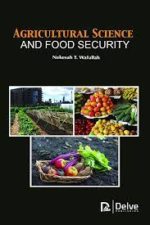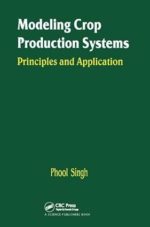The book covers the important aspects of water, air and noise pollution. Using a multidisciplinary approach, it highlights the impact of environmental pollution in the world. It also suggests methods for controlling and scientific monitoring of pollution-causing agents. Also included are chapters on efficient guidelines and standards, radioactive waste, solid waste disposal and sewage treatment, oil pollution and role of insecticides. Pollution in tanneries, fertilizer industry, and pulp and paper industries is also covered. The last few chapters are devoted to environmental management, benefit-cost analysis and mathematical modelling for environmental pollution control.
Environmental Engineering Paperback – 14 July 2017
KSh 7,500.00
The book covers the important aspects of water, air and noise pollution. Using a multidisciplinary approach, it highlights the impact of environmental pollution in the world. It also suggests methods for controlling and scientific monitoring of pollution-causing agents. Also included are chapters on efficient guidelines and standards, radioactive waste, solid waste disposal and sewage treatment, oil pollution and role of insecticides. Pollution in tanneries, fertilizer industry, and pulp and paper industries is also covered. The last few chapters are devoted to environmental management, benefit-cost analysis and mathematical modelling for environmental pollution control.
3 in stock
| SKU: | 9780074633281 |
|---|---|
| Categories: | Agriculture, Engineering |
| Author | G N Pandey |
|---|
Related products
-
Tropical Roots and Tuber Crops: Cassava, Sweet Potato, Yams and Aroids (Crop Production Science in Horticulture)
KSh 8,260.00Root and tuber crops are important to agriculture, food security and income for 2.2 billion people in developing countries. These species produce large quantities of dietary energy and have stable yields under difficult environmental conditions. This second edition of Tropical Root and Tuber Crops is an authoritative treatment of four important root and tuber crops: cassava, sweet potato, yams, and aroids.
The same format is followed for each crop: Origin and History, Taxonomy and Botany, Breeding and Genetics, Developmental Physiology, Agronomy, Pests and Diseases, Post-Harvest Quality and Marketing. This new edition reviews the scientific literature produced during the last decade and presents major technical advancements. Modern molecular tools have been used to clarify the phylogeny, taxonomy and origin of these species. Similar advances have been made in physiology, agronomy, pathology and product chemistry. It is essential reading for students, researchers and horticulturists.
-
Writing for Engineers (Bloomsbury Study Skills, 31)
KSh 4,620.00This book is full of practical advice and useful examples to help students and engineers write clearly, accurately and impressively. This updated fourth edition features new material on technical notes, inspection reports and business cases, along with abstracts and summaries. It is an essential aid for today’s engineers.
-
Understanding Mechanics-oxford university press
KSh 12,800.00One of the clearest and most straightforward texts ever published, Understanding Mechanics covers all the topics required in the single-subject A Level.
It is equally appropriate for those preparing for other Mathematics examinations at A Level and for students on technical courses in further and higher education.
Key Points:
· Principles are introduced in a simple and direct manner and all have worked examples
· Ample opportunity is given for practice with questions and exercises carefully graded to provide a steady progression
· Each chapter closes with a comprehensive selection of recent examination questions
· Answers are given at the back of the book
-
Agricultural Science and Food Security
KSh 23,800.00Agricultural Science and Food Security discusses the challenges and hurdles in global food security. The scope of the book includes, but not limited to agricultural science, sustainable agricultural food production, food production and efficiency in utilization of agricultural resources. The main reason is the poor management of pests, weeds ad diseases in crops that is obstructing the way of food security globally ad to address the same, management of same has been discussed in details to maximize production of food crops.
-
Future Hype: The Myths of Technology Change
KSh 1,595.00Future Hype surveys the past few hundred years to show that many of the technologies we now take for granted transformed society in far more dramatic ways than more recent developments so often touted as unparalleled and historic. In this thoughtful book, Bob Seidensticker exposes the hidden costs of technology—and helps both consumers and businesses take a shrewder position when the next “essential” innovation is trotted out.
-
The Science of Agriculture: A Biological Approa
KSh 27,580.00THE SCIENCE OF AGRICULTURE: A BIOLOGICAL APPROACH, Fifth Edition, masterfully introduces the biological sciences and explores the influences of these sciences on modern agricultural practices and the agricultural industry. Reader-friendly and superbly illustrated, this highly practical text explains not only the �how� of agriculture, but also the �why� behind agriscience, presenting information on plant and animal systems, soils, cell functions, genetics, genetic engineering, plant and animal reproduction, entomology, biotechnology, and environmental concerns. Additionally, the text spotlights career opportunities and discusses new directions in agriculture, including topics such as no-till crops, high-pressure processing in food preservation, fracking, and more, to further engage you with today�s agricultural world.
-
Modeling Crop Production Systems: Principles and Application 1st Edition by P Singh (Author)
KSh 5,800.00The use of simulation models is a necessity and also an aid in the decision-making process in sustainable agricultural systems. Organizing the experimental knowledge of crop production systems without the book keeping and deductive methods of mathematics is very difficult. This book aims to guide readers in the process by which the properties of the systems can be grasped in the framework of mathematical structure with minimal mathematical prerequisites. The objective of this book is to help the undergraduate, graduate and post-graduate students in the disciplines of agronomy, plant breeding, agricultural meteorology, crop physiology, agricultural economics, entomology, plant pathology, soil science and ecology (environmental science). This book may also be useful for administrators in various agricultural universities in order to direct research, extension and teaching activities. Planners at national and state levels may also benefit from this book
-
Agricultural Marketing and Price Analysis
KSh 9,330.00Norwood and Lusk provide a fresh approach to marketing and price analysis that speaks to undergraduate students. In addition to providing thorough coverage of core topics, they address exciting developments and emerging areas of research in the field. Friendly and engaging, Agricultural Marketing and Price Analysis presents a comprehensive approach to agricultural price analysis, agricultural market structures, and agricultural marketing strategies.
Unique to this book is the inclusion of the equilibrium displacement model and a chapter on consumer behavior and research. The Meet the Professional feature illustrates how the economic principles covered fit into the careers students will soon enter. End-of-chapter crossword puzzles and study questions assist in learning terminology and test preparation. Succinct and approachable, this text sets the stage for an enjoyable and effective learning experience.










Be the first to review “Environmental Engineering Paperback – 14 July 2017”